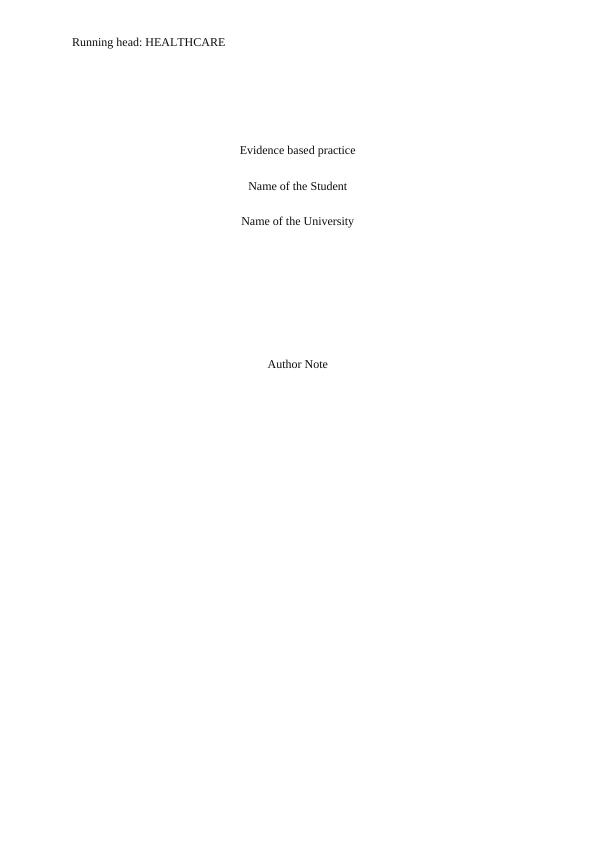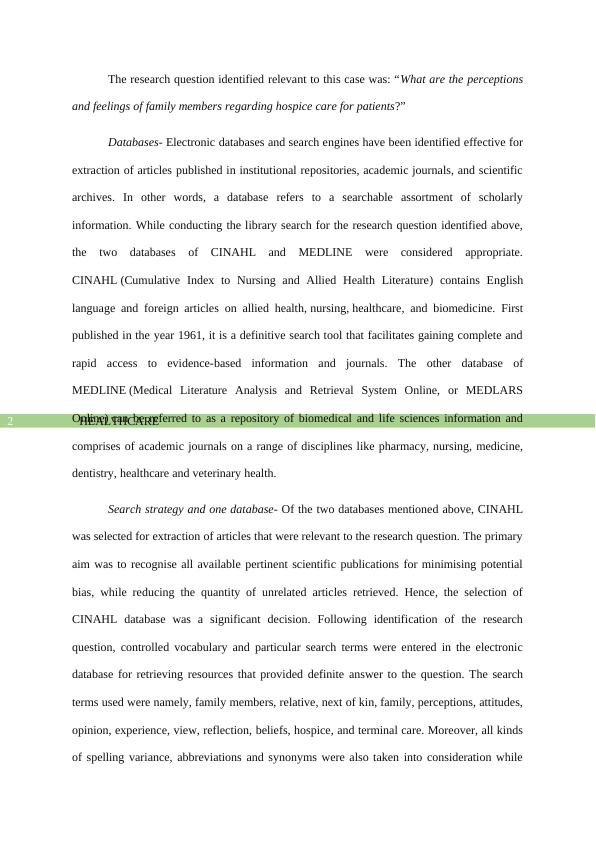Health Care Study of Hospiscare
This unit explores the nature and history of evidence-based nursing practice and how to link evidence with clinical reasoning in the provision of person-centred nursing care.
9 Pages1711 Words17 Views
Added on 2022-08-14
Health Care Study of Hospiscare
This unit explores the nature and history of evidence-based nursing practice and how to link evidence with clinical reasoning in the provision of person-centred nursing care.
Added on 2022-08-14
ShareRelated Documents
End of preview
Want to access all the pages? Upload your documents or become a member.
PICOT Question Based on Hospice Care
|7
|1275
|77
Evidence Based Nursing Research
|5
|1088
|36
Hospice Family Members Perspicacity’s and Understandings Research Question 2022
|5
|1467
|16
Using PICO to Formulate Clinical Questions in Nursing
|6
|1140
|358
The Research Template
|7
|2135
|17
Evidence Based Practice for Hospice Care
|7
|1463
|16



